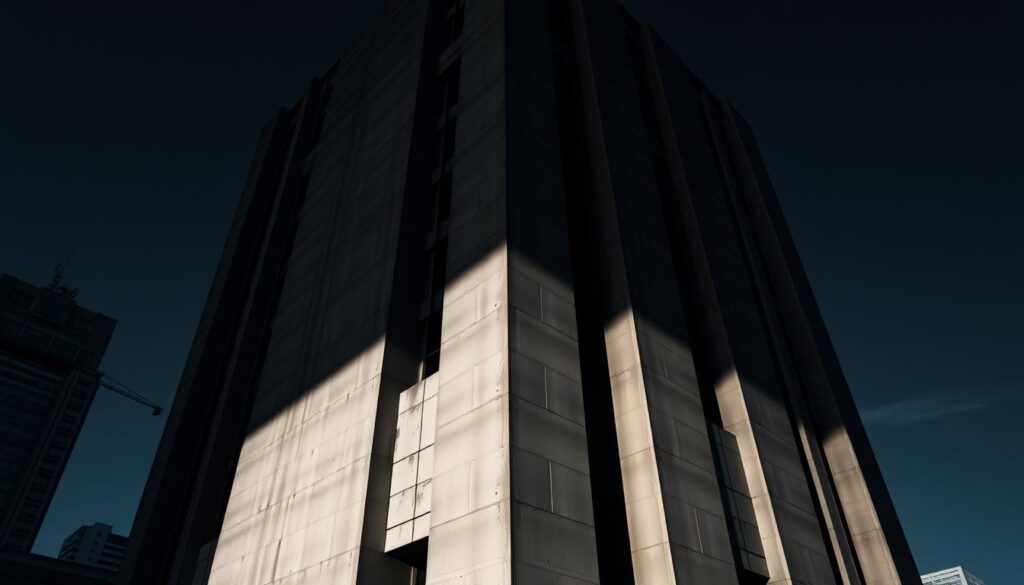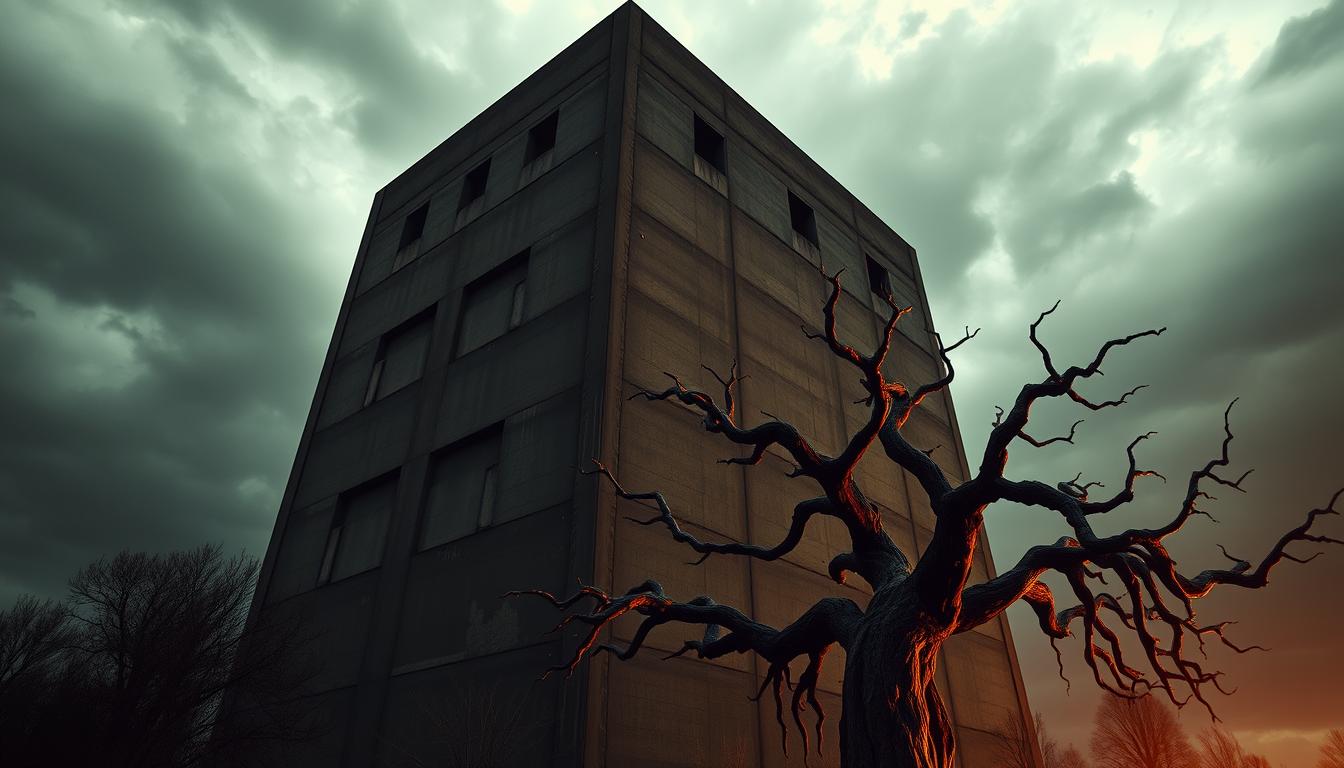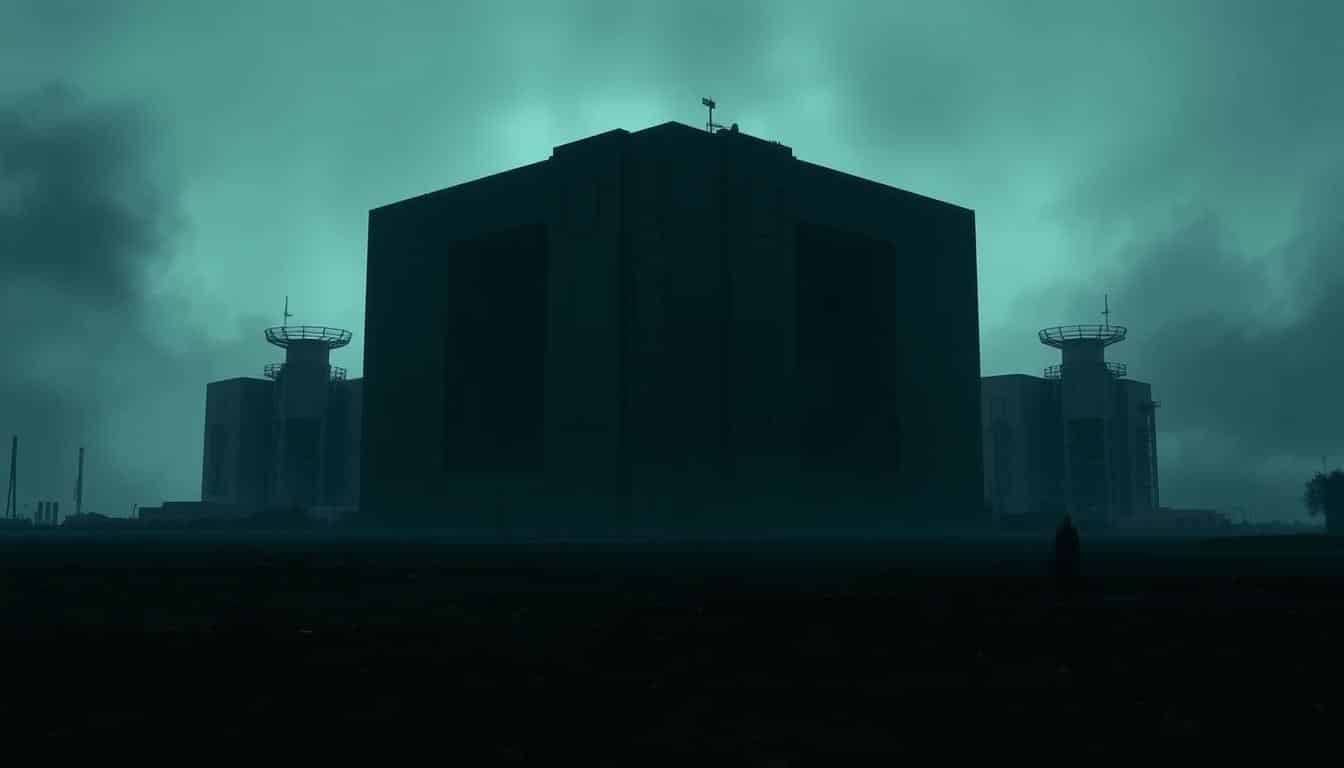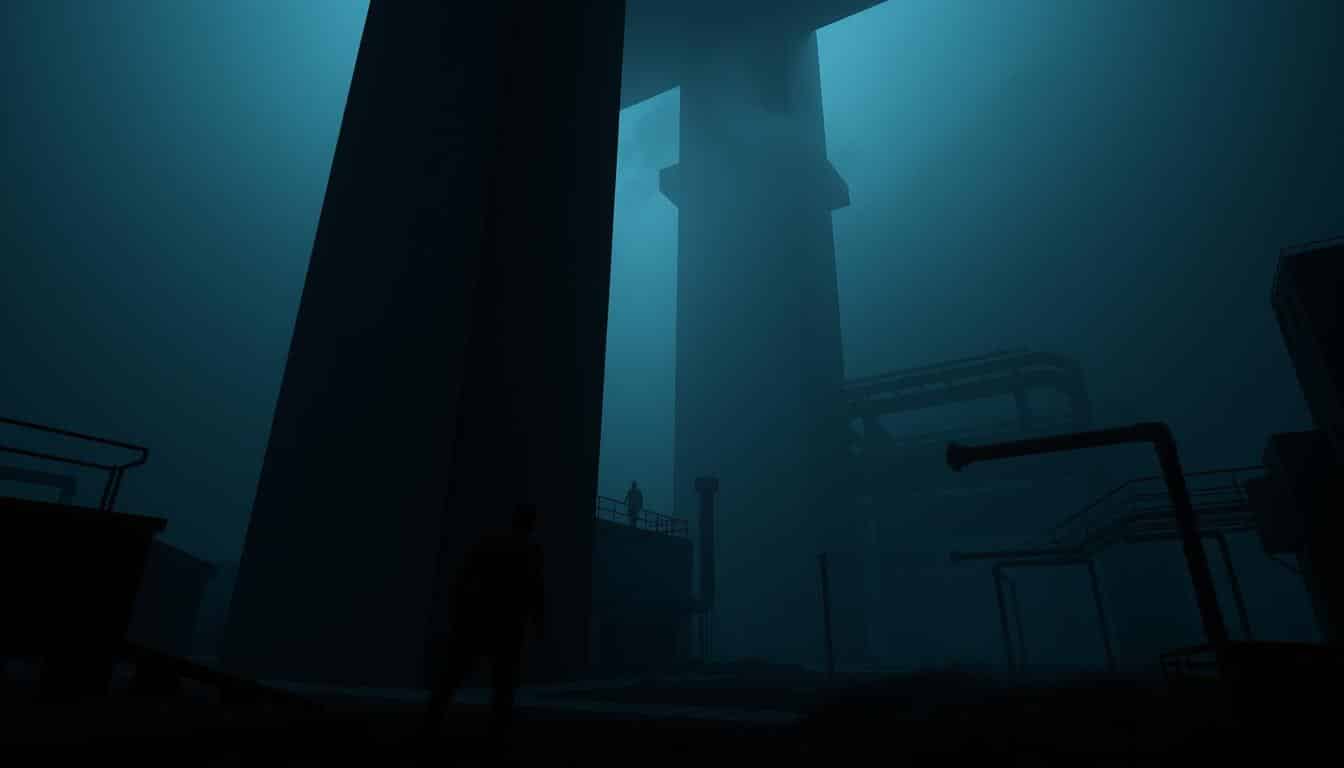The style known as Brutalism, with its bare, unpolished designs, has made a distinct mark in horror storytelling. This part looks at how Brutalism shapes story development, creating an atmosphere that deepens emotional connection. It shows how these simple structures make horror stories more unsettling. We invite readers to think about how architecture affects our fear. This article will go into how Brutalism and horror stories work together to create fear and curiosity.
The Essence of Brutalism in Architecture
Brutalist architecture uses raw concrete and geometric shapes. It shows the goals of social and aesthetic beliefs of its era. After World War II, it aimed to meet city needs and help community feeling with its big buildings. Its simple and functional designs make these buildings look plain. Yet, they also seem grand, feeling both powerful and lonely.
The main material, béton brut, makes buildings look lasting and strong. This rough concrete texture adds to its simple charm. But, it also hints at beauty mixed with harshness. Famous architects like Le Corbusier helped shape Brutalist architecture. They blended social values with the goal to rebuild war-torn cities.
Brutalism’s impact on architecture talks continues, showing hope and the tough realities of rebuilding after war. The striking look of these buildings sparks strong feelings. They become the setting for today’s social stories.

The Relationship Between Architecture and Storytelling
Architecture and storytelling are deeply linked, both shaping how we feel and experience stories. Buildings do more than stand; they set the stage for our tales, affecting our emotions. The way a place is designed changes how we see and feel about it. In movies, the look and feel of spaces can change the whole vibe, shaping the story and its characters.
The study of how spaces affect us, known as environmental psychology, is key to this link. The setup of a space, along with its light and materials, can turn it into a powerful story element. A dark hallway might scare us, while a bright, open room makes us feel safe. This connection between architecture and storytelling doesn’t just make stories more interesting; it pulls us in deeper.
The more a story develops, the more important the setting becomes. Big, dramatic buildings can highlight major moments, while small details might reveal secrets about the characters. When storytellers understand how architecture works with their tales, they can make their worlds feel more real and captivating.
Brutalism and its Influence on Horror Storytelling
Brutalism’s raw materials, imposing shapes, and simple design create a unique feeling that fits well in horror stories. The bare look of Brutalist buildings makes things feel uneasy in horror scenes, helping viewers feel lost and disconnected. This style of architecture is great for tales that aim to scare and keep you on edge.
In horror movies, settings often reflect what characters feel inside. Brutalist buildings are perfect for showing inner turmoil. Their big, heavy designs can make characters seem trapped and exposed. This makes the story even more gripping. The interaction between setting and fear shows how important atmosphere is in horror storytelling. The environment is almost like another character.
Architectural Elements Defining Horror in Film
In movies, the link between architecture and storytelling draws in the audience. The setting in horror stories is often marked by specific architectural features. These features escalate the emotional impact. Elements like size, shape, and the materials used influence how scared or tense we feel.
Small, tight spaces can make suspense soar in a film. Twisting, maze-like designs can confuse us, while sharp differences between light and dark create a spooky vibe. These details pull us in closer, as the setting plays off the characters. This mix of architecture and story ramps up the tension, making our experience super intense.
Understanding these tricks in horror movies lets directors control how we feel. With well-designed spaces, fear spreads throughout the story. This pulls us deeper into the horror we see unfolding on the screen.
Historical Context: Brutalism’s Rise Post-WWII
After World War II ended, countries had to rebuild a lot. This led to Brutalism becoming a big deal in architecture. This style was about making public places that brought people together. Architects wanted their buildings to reflect the community’s shared goals.
Brutalism stood out because of its simple concrete and bold shapes. These choices were based on the social needs of the time. Brutalism mixed old ideas with new. It was a sign of hope as cities grew.
But people’s views on Brutalism changed over time. What once symbolized fresh beginnings turned into a mark of city neglect. As our needs changed, so did our opinions on Brutalist buildings. This has made Brutalism a hot topic when talking about city life.
Symbolism of Brutalist Structures in Horror Narratives
Brutalist architecture brings a sense of unease, perfect for horror themes. It uses themes like authoritarianism, decay, and society’s failure. In horror, these ideas create a haunting atmosphere.
Brutalism shows the dark sides of people through its stark, imposing buildings. These structures reflect characters’ inner turmoil and fears. They also critique social issues, making the story’s message louder.
Brutalist buildings in horror movies and books set a spooky scene. These stark designs highlight loneliness and despair. Here’s how Brutalist architecture works in horror:
- These buildings act as characters themselves, changing the characters’ destinies.
- The cold, hard lines make people feel trapped and without hope.
- Decaying structures symbolize falling morals and social decay.
- Playing with light and shadow makes these places even more menacing, adding suspense.
Stories with Brutalist settings let us see how shape and story mix. These architectural details add to the horror, making the setting scarier. The buildings symbolize the story’s terror.
Famous Brutalist Structures as Horror Backdrops
Some famous Brutalist buildings are key to horror films and media. Their big, stark designs make viewers feel scared and uneasy. The Boston City Hall and the Barbican Centre are more than just places. They add to the story by making the mood more tense.
In a lot of horror movies, these buildings are like characters themselves. They shape the story with their strong architecture. For instance:
- The Boston City Hall looks like a fortress, making you feel alone and isolated.
- The Barbican Centre, with its concrete halls and sharp angles, seems really spooky.
The design of these buildings causes real feelings for the audience. The tough feel of brutalist design highlights fear, feeling out of place, and unclearness. As the story goes on, the role of these buildings in horror becomes clear. This shows how closely linked the buildings and the story are.
The Intersection of Brutalism and Psychological Tension
Brutalist architecture’s unique look is key in creating tension in horror stories. Its bold, simple shapes do more than fill space. They bring characters’ inner struggles to life. Directors use these Brutalist traits to make characters more complex. This setting connects deeply with viewers, making the fear feel real.
Brutalist horror themes lead to new ways of telling stories. These buildings’ heavy feel reflects characters’ mental fights, making us more uneasy. As we see scenes in grim, concrete places, they symbolize the loneliness and fear of the characters. It shows their personal battles in a physical form.
The raw look of Brutalism lets filmmakers dive into tough stories, challenging usual ideas. The dominance of these structures makes us face our fears head-on. Using places this way not only heightens the suspense but makes the setting almost like another person in the story. It opens new paths for stories.
The Evolution of Horror Storytelling Dynamics
The way horror stories are told has changed with culture and technology. Brutalism has been important in this journey. It affects how stories are told in movies and books. Its simple, raw look mirrors inner feelings, making horror stories more impactful.
As movies changed, Brutalist buildings started appearing in horror scenes. These buildings symbolize loneliness and fear. They make the danger feel more real for the characters. Filmmakers and authors use Brutalism to twist or stick to classic horror themes.
Modern horror mixes different styles, using Brutalist buildings to show what scares society today. The rough look of these buildings helps tell stories about trauma more deeply. People are drawn to these stories. They get scared, but also think about deep, human issues.
Brutalism’s Influence on Modern Horror Media
Brutalism is making a comeback in modern horror media, offering a fresh way to tell stories. Films and books use the stark, heavy look of Brutalist buildings to boost feelings of being alone and scared. This architectural style doesn’t just look cool; it mirrors the worries we all feel today.
Brutalist architecture makes for a striking background in horror stories. It shows the mess and emotional turmoil inside the characters, making everything more intense. This setting makes viewers’ own fears seem real, deepening their connection to the story.
Creators mix brutalism with tales of horror to hit on true and deep feelings. This mix breaks away from old storytelling styles, leading to deeper tales about fear and feeling out of place. Brutalism keeps influencing horror stories, proving it’s still powerful in telling today’s tales.
Conclusion
Brutalism has had a big impact on horror stories. It’s more than just a setting; it shapes the story and makes feelings stronger. The big, bold looks of Brutalist buildings make us feel uneasy. This matches well with horror’s themes of fear and tension. Together, they create a story world that pulls us in, showing how architecture impacts storytelling.
Looking into Brutalism, we see how its design adds to the spooky feel vital for horror. Every design choice changes how we see the story and adds to the horror themes. This shows how important Brutalist design is for horror stories. It makes us think about how buildings affect the stories told in them.
Looking ahead, it’s clear that architecture’s role in horror is still changing. Whether it’s new buildings or changing old ones, the link between buildings and stories is a chance for new ideas and creativity. This ensures conversations about horror storytelling influence will keep going as we explore new horror stories.



